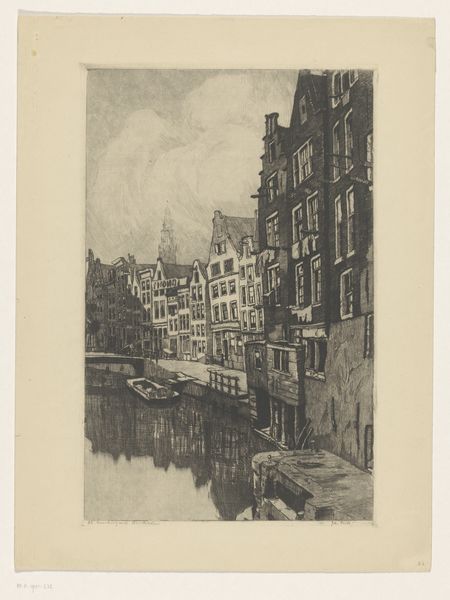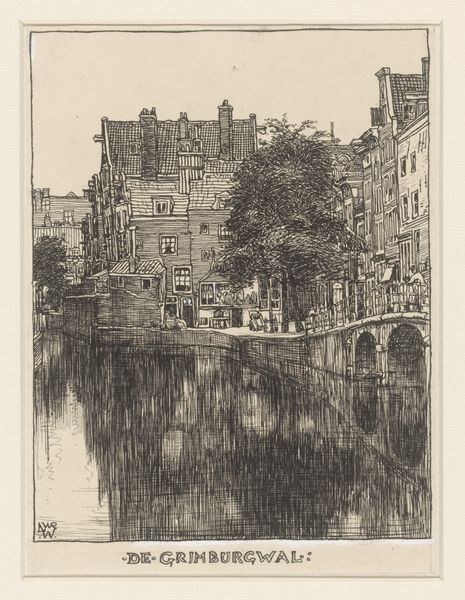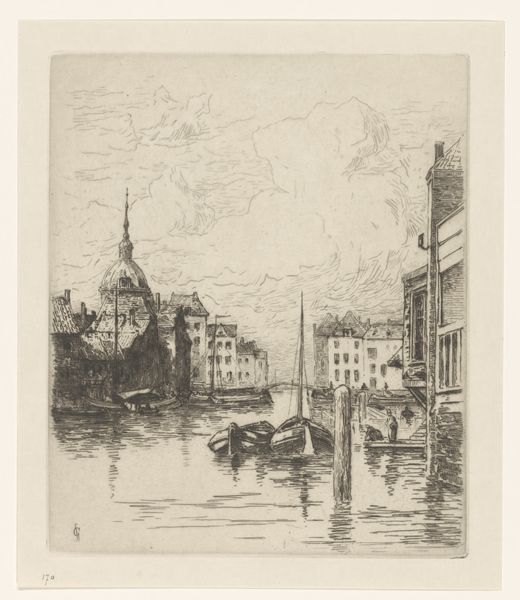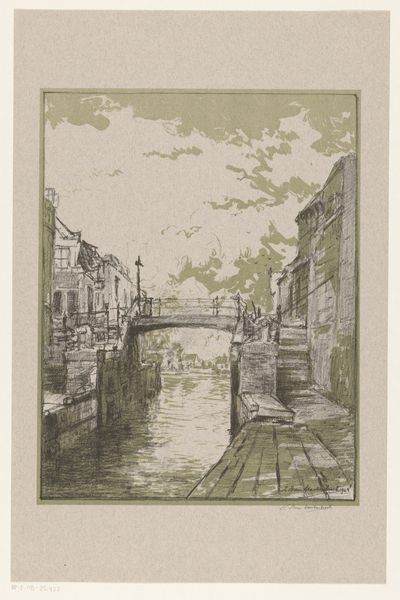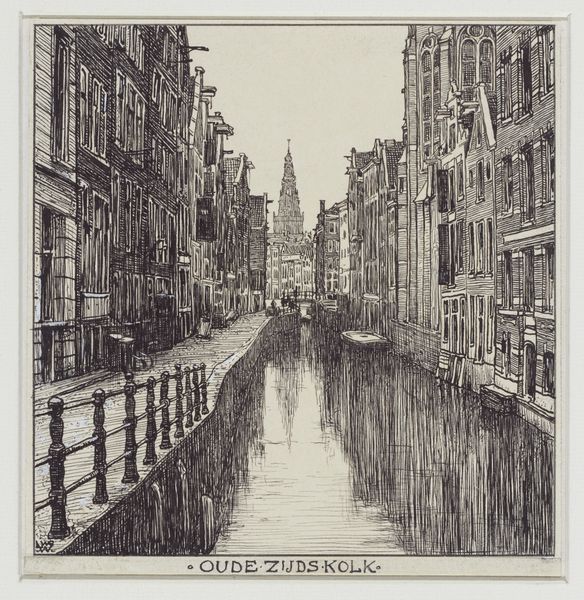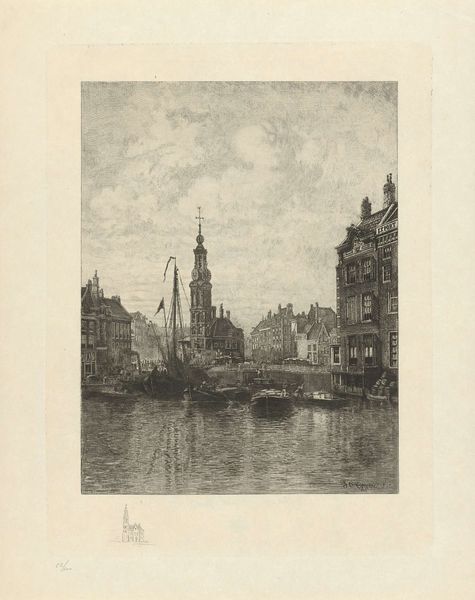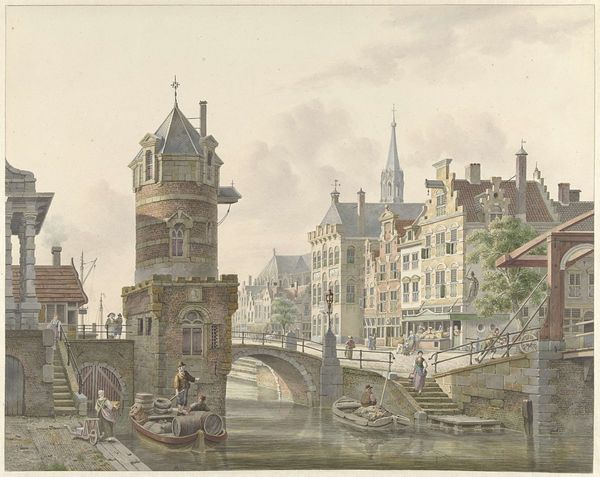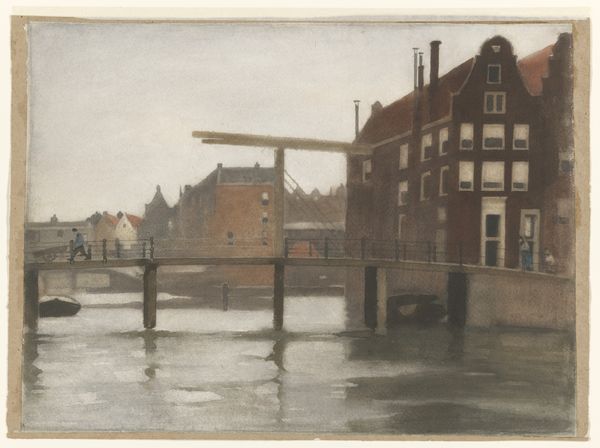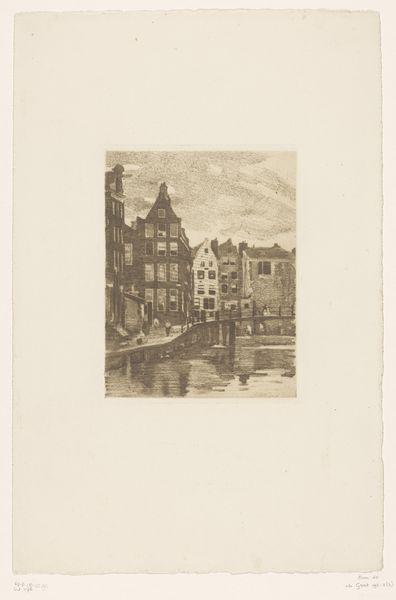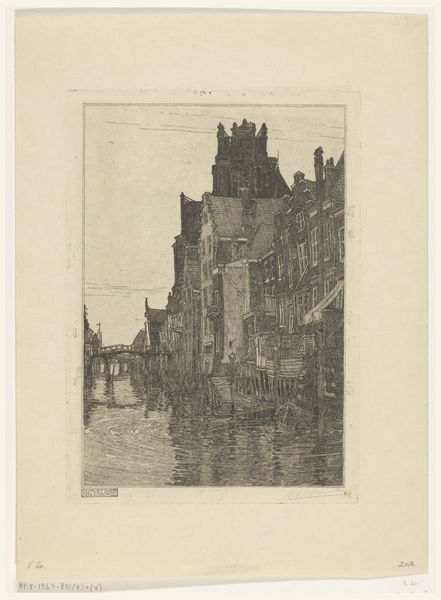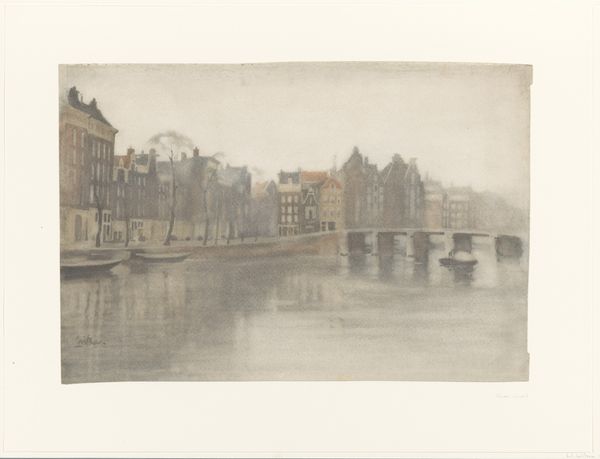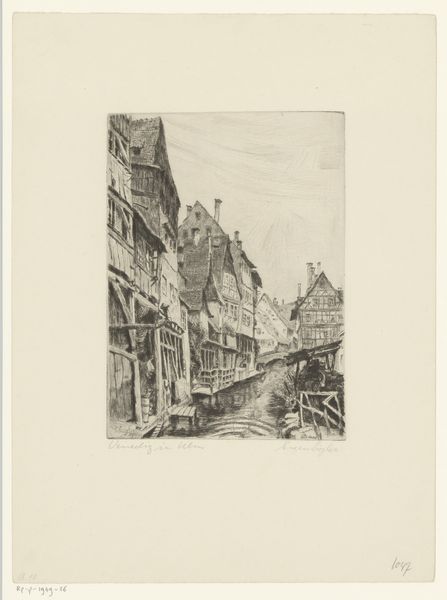
watercolor
#
impressionism
#
landscape
#
watercolor
#
cityscape
#
watercolour illustration
#
watercolor
Dimensions: height 316 mm, width 213 mm
Copyright: Rijks Museum: Open Domain
Editor: So, this is Johannes Christiaan Karel Klinkenberg’s "Rotterdam," a watercolor painting that he worked on between 1875 and 1899. It has such a subdued, almost ethereal quality to it. What elements stand out to you as you look at its composition? Curator: The orthogonal lines established by the canal and buildings immediately create a deep recession into the pictorial space, effectively drawing the viewer's eye towards an indeterminate vanishing point. Notice how Klinkenberg orchestrates a delicate balance between linear precision and atmospheric diffusion through the watercolor medium. What effect do you think that contrast creates? Editor: It’s like a push and pull! The sharp architectural details give way to soft reflections on the water, making it feel both real and dreamlike. How does the limited color palette contribute to the overall feeling? Curator: Precisely. The muted grays, browns, and whites, punctuated by occasional darker accents, serve to unify the composition. Klinkenberg masterfully utilizes value relationships rather than relying on a wide array of hues. Observe how the subtle variations in tone articulate form and texture without resorting to garishness. Could we then interpret the artist's decision to focus on formal values as a sign of an inherent order of things? Editor: That makes sense! I was so focused on the subject matter, the cityscape itself, that I hadn’t fully appreciated how the artist uses the formal elements to guide my eye and create this sense of harmony and distance. I'll certainly be thinking about that more in the future! Curator: Indeed, and it is through such attentiveness that a more complete understanding emerges.
Comments
No comments
Be the first to comment and join the conversation on the ultimate creative platform.
